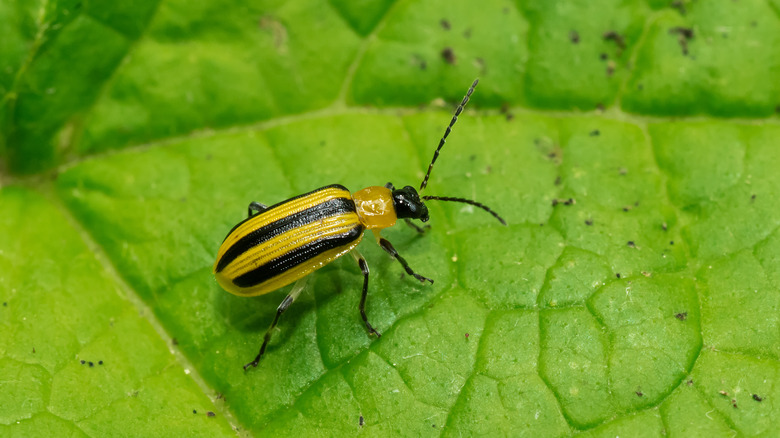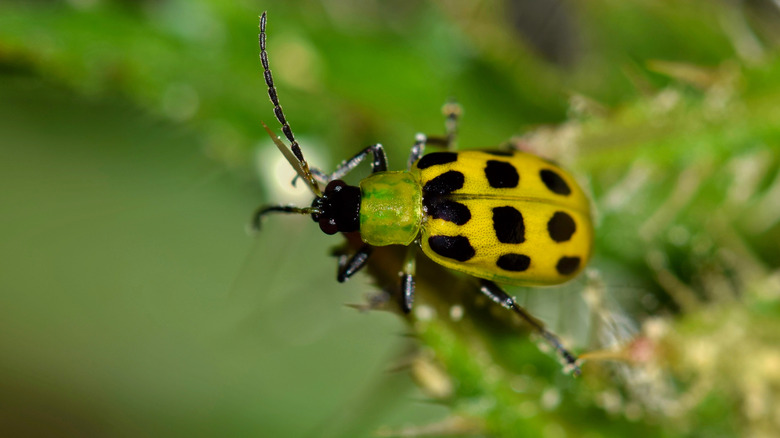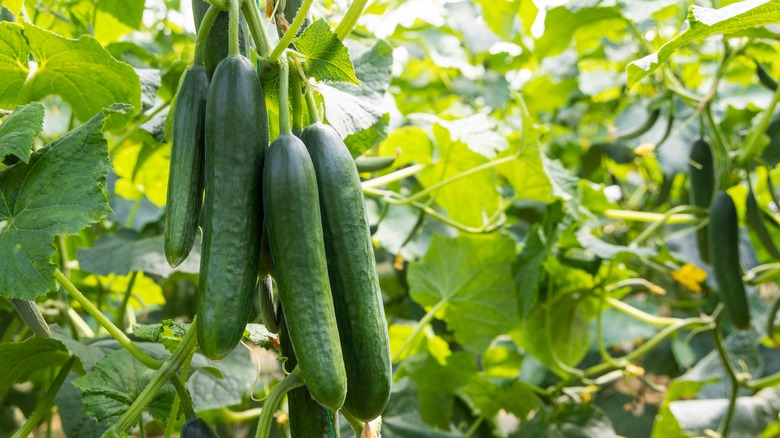How To Keep Cucumber Beetles Out Of Your Garden
Cucumber beetles are small insects that damage and spread diseases to cucurbit plants like cucumbers, watermelons, squash, and pumpkins, so it's essential to use a combination of preventive measures and control strategies to minimize their presence in your garden.
Cucumber beetles are especially troublesome when you're planting cucumber seedlings, or when two or three beetles morph into a large infestation. The larvae of cucumber beetles feed on the roots of the plant, while the adults feed on the foliage, flowers, and fruits, weakening the cucurbits and damaging their appearance. One variety of cucumber beetle, the striped cucumber beetle, is notorious for causing bacteria wilt which can spread quickly and kill the plant. Cucumbers and cantaloupe are especially vulnerable to this disease.
Cucumber beetles have a relatively short life cycle and can reproduce rapidly, meaning that a high population can quickly develop in the garden, leading to more damage and disease transmission. They overwinter as adults in garden debris and then emerge in spring and early summer, ready to infest new plants and continue their life cycle, so it's crucial to take care of these pests as soon as possible.
Checking your garden for cucumber beetles
By inspecting your cucurbit plants regularly for cucumber beetles or signs of their activity, you can identify any problem and address it before it gets out of hand. Cucumber beetles are an orange-yellow, about a quarter of an inch in length, and one-tenth of an inch in width with either stripes or spots. They can be handpicked out of your plants and destroyed or vacuumed out, but you can also apply targeted pesticides carefully. Make it a habit to maintain your garden well by cleaning up debris and weeds so they don't serve as hiding spots and breeding grounds.
As you plant cucurbits, surround them with a thick layer of mulch so that the beetles can't lay eggs, and use lightweight row covers on the ground beneath your plants to physically block them from accessing your plants. Check your plants early in the season for wilt and defoliation (meaning the loss of foliage) and remove any infected plants so disease can't spread.
Additional ways to keep cucumber beetles away from your garden
What and how you plant are important factors in deterring cucumber beetles. You can interplant your cucurbits with repellent companion plants like nasturtiums or radishes, or add plants with strong scents like sage, catnip, and marigold that will make it harder for cucumber beetles to find cucurbit plants. Make sure you rotate your crops each season to disrupt the life cycle of cucumber beetles, and try planting cucumber varieties that mature early in the season so that you can avoid when cucumber beetles are most active.
Another tip is to attract their natural predators like ladybugs and ground beetles by planting flat-topped flowers like fennel and dill. Lastly, consider planting a 'trap crop' of cucurbits before you plant your more prized ones. The sacrificial trap crop will attract the cucumber beetles, making it easy for you to destroy them all at once before they have a chance to pounce on your heirloom melon varieties.


